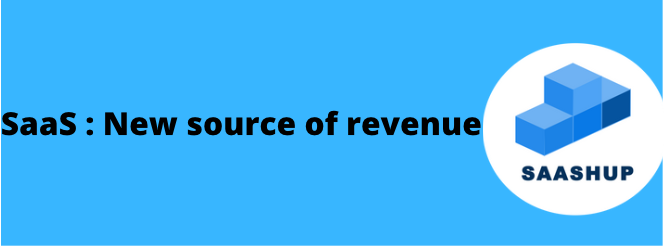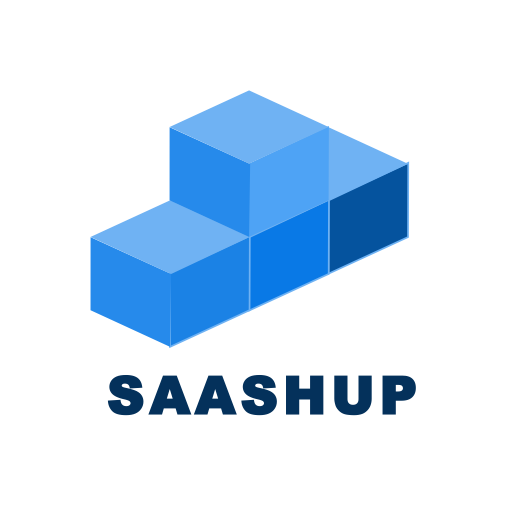Software as a Service: What is it and how it can transform your own online application in revenue
Helper
Last Update 3 years ago

Discover the trends in SaaS and how some platform tools help businesses increase productivity and scale operations.
Saashup.com 04/03/2022 share on twitter
Are you trying to sell online your application? Do you see any interest in running it with monthly subscriptions? Are you convinced but with a limited budget or no budget at all?
Do you fear managing a tricky IT infrastructure? Or are you just exploring the vast space of saas tools and wondering: " Is this the future of how online application should exist, or is it just fantasy?"
In this post, we’ll share with you the key facts you need to know about SaaS: what it is, why it is essential, what are examples of SaaS tools, how businesses can use them, and how SaaS is predicted to evolve in the next few years.
What is SaaS?
Gone is the time when software platforms were restricted to devices and strictly required an on-premise use for employees to operate on the same. These software solutions needed users to be attached to a specific device or location to use them.
Software as a Service (SaaS) is a software distribution model in which a third-party provider hosts applications and makes them available to its customers over the Internet. "It is one of the four main categories of Cloud Computing, along with Infrastructure as a Service (IaaS), Platform as a Service (PaaS), and Desktop as a Service (DaaS). Some of the significant providers of SaaS software include Salesforce, Oracle, IBM, Intuit and Microsoft.
Is it only for major companies?
Significant companies use SaaS to profit directly or indirectly by selling their tools with online or offline subscriptions.
They made and still make large scale investments to provide a large set of online services, bought and used worldwide by millions of users and millions of customers.
Be innovative; entrepreneurship is for major companies and maybe you. Before being well known or so-called standard on the market, most of them started their business journey with a concrete idea, a minimal budget, and, as you may have read probably, within a garage.
What does it mean? You as a developer or a team can also propose your application in a Software as a Service model.
Multiple solutions exist on the internet to start your adventure.
Why SaaS model is different from monolith?
The SaaS model ensures recurrent revenues by selling subscriptions to your customers. But also provide a private application space to customers. This segregation is plenty of advantages for your customers and you as well.
Your application can scale per subscription. Your service uptime is not locked to a single component running on a single giant server.
Your application infrastructure can grow or decrease depending on your sales!
Behind the scene, a SaaS can benefit from an enormous scope of automation.
Why do you need SaaS?
The examples above highlight four benefits of SaaS: increased scalability and segregation, availability and automation. Without automation orchestration, business departments risk working out of sync, thus impacting the overall progress and costs of the organisation.
You can choose one of two paths to get there. Traditionally, you will be able to boost efficiency by adding department-specific personnel or IT-savvy engineers who can automate your infrastructure. IT departments become fusion teams, where personnel with various talents can directly contribute to the department's automation operations.
Or, to respect your budget, you can take advantage of some SaaS provider platform, fully built to avoid having a large IT team costing some money, to reach your goal.
In a nutshell, the SaaS provider platform aids businesses in reducing expenses, increasing productivity, and improving their overall business model. You or your employees who have their mundane jobs automated have more time to focus on more meaningful and creative work, which boosts their job satisfaction.
Seamless Upgrades
As previously said, SaaS solutions are highly adaptable and adjustable. Technological improvements are swift in 2022, and a firm must keep up with the latest trends to remain relevant.
SaaS integration enables you to upgrade to a newer edition of a software platform without having to go through time-consuming and complex programming. With a simple click, you'll have enhanced tools and new editions to help you scale up your business processes.
How Can Small businesses leverage SaaS provider platform?
Cost-Effective Solutions
Cost is usually one of the most important variables driving small and medium-sized business decisions. You can save money on heavy installation to create your own SaaS. In contrast to traditional software development, SaaS engine integration does not require on-premise installation or infrastructure, nor cloud infrastructure high cost while integrated audit, authentication and payment are available with some.
Selecting an on purpose SaaS may drastically cut the expenses associated with performing your own platform automation.
Also, some SaaS engine platforms come with a "pay-as-you-go" or even "free of charge launch". This allow you to spend money only on activities, bringing added value for your business.
Saving Time
When opposed to setting up a software platform, using a SaaS engine platform takes much less time. All you have to do is browse to the official website of the dedicated engine platform, register as a SaaS owner, pay for the package you want to publish as SaaS, and start using it right away.
Guarantee of Service And Data Backup
Most traditional software platforms do not provide comprehensive service assurance and can crash if confronted with unforeseen situations. Most SaaS programs, on the other hand, ensure that the platform will be up and running at all times. Furthermore, whereas backing up data on traditional systems is time-consuming, it can be done with a few easy clicks on SaaS services.
Rent a SaaS engine will avoid you to create all components (load balancing, backup services etc.) to be remain competitive against SaaS landscape.
What is the future of SaaS provider platform?
Given the widespread use of SaaS apps by businesses around the world, it's safe to assume that their significance will only grow over time.
Professionals have been obliged to work remotely since the spring of 2020, and businesses have begun to build up virtual offices. In such instances, setting up on-premise software the traditional way is nearly difficult. SaaS solutions, such as Salesforce, Office 365, Workday, Sharepoint, and SAP Concur, have been increasingly popular in recent years. You should also follow this trend to sell your application, thanks to a SaaS engine solution.
In addition, many businesses runs without IT teams, so they are looking for online solutions, always available, always up to date.
According to FORBES job market evolution trend is to become freelancer or start your own business.
McKinsey estimates 500 million freelancers working through platforms before 2030. Covid-19 didn’t create the freelance revolution, but it’s been quite an accelerant.
More ... platforms. Platform creation grows unabated. I get several requests each week from new-to-me platforms seeking funding, publicity, or advice. My estimate - 800-1000 platforms - feels low. An updated global census is sorely needed and one is in the works by the Center for the Transformation of Work (CTW).
More ... companies using proprietary platforms for direct sourcing. It’s the classic Gillette strategy: Give away the handle, sell the blades. Platforms offer enterprise clients help in creating a proprietary platform and populate it with a curated selection of platform freelancers. Now, corporate clients are adding independent freelancers and alumni, as well as boutique consultancies to their proprietary platforms. Expect this trend to continue and grow.
Rick Blyth shares his micro SaaS handbook and proposes a concrete approach on moving forward with your own SaaS. https://rickblyth.com/micro-saas
Eventually, I sold and exited my apps and now I'm passionate about helping other software developers & programmers realise they can become a Micro SaaS startup founder and utilise their existing skillset
Alexander Lewis at foundr.com wrote an article called "4 Paths to Monetizing Software: Advice from Top SaaS Entrepreneurs" available here. This articles gives you stories on how to make your software profitable.
Building functioning software alone is hard enough. Getting other people to pay for that software is another challenge entirely. So what does it take to make your software profitable?
David Linthicum from infoworld describes the SaaS-ification movement, available here
Companies that have nothing to do with cloud computing now see opportunities to become a cloud provider of data products and services that can enhance another enterprise’s operations within their specific market segment or other markets. Unrealized opportunities abound in traditional fields like healthcare, finance, manufacturing, and more.
As a result, it is evident that SaaS is the way of the future, and organisations should integrate SaaS platforms before it is too late.
Make the Much-Needed Switch to SaaS Integration
saashup.com will provide you with the best options for integrating your SaaS applications in order to save time and money. Our professionals in the field of SaaS platform creation services will ensure that you setup easily and efficiently your own Software as a Service, thanks to our ENGINE.
From concept to implementation, you can count on us to supply you with reliable SaaS Engine. All you have to do is get in touch with us to schedule a free consultation with one of our SaaS creation experts, or consult our plans on https://saashup.com/#plan-title.
